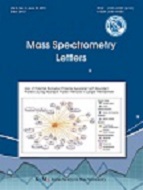
- P-ISSN 2233-4203
- E-ISSN 2093-8950

Ginseng (Panax ginseng Meyer) is a well-known health functional food used as a traditional herbal drug in Asian countries owing to its diverse pharmacological effects. Herb-drug interactions may cause unexpected side effects of co-administered drugs by the alteration of pharmacokinetics through effects on cytochrome P450 activity. In this study, we investigated the herb-drug interactions between Korean red ginseng extract (KRG) and five CYP-specific probes in mice. The pharmacokinetics of KRG extract induced-drug interactions were studied by cassette dosing of five CYP substrates for CYP1A, 2B, 2C, 2D, and 3A and the LC-MS/MS analysis of the blood concentration of metabolites of each of the five probes. The linearity, precision, and accuracy of the quantification method of the five metabolites were successfully confirmed. The plasma concentrations of five metabolites after co-administration of different doses of the KRG extract (0, 0.5, 1, and 2 g/kg) were quantified by LC-MS/MS and dose-dependent pharmacokinetic parameters were determined. The pharmacokinetic parameters of the five metabolites were not significantly altered by the dose of the KRG extract. In conclusion, the single co-administration of KRG extract up to 2 g/kg in vivo did not cause any significant herb-drug interactions linked to the modulation of CYP activity.
Yang, M. (2014). . BMC Complem. Altern. M, 14, 265-.
홍미건. (2016). Anti-inflammatory and antifatigue effect of Korean Red Ginseng in patients with nonalcoholic fatty liver disease. Journal of Ginseng Research, 40(3), 203-210.
Jeon, B. H. (2000). . Acta Pharmacol. Sin, 21, 1095-.
강수원. (2012). Ginseng, the 'Immunity Boost': The Effects of Panax ginseng on Immune System. Journal of Ginseng Research, 36(4), 354-368.
백인호. (2013). The world ginseng market and the ginseng (Korea). Journal of Ginseng Research, 37(1), 1-7.
Fugh-Berman, A. (2000). . Lancet, 355, 134-.
Polasek, T. M. (2011). . J. Clin. Pharmacol, 71, 727-.
Hefner, G. (2015). . Contemp. Behav. Health Care, 1, 3-.
Wang, J. F. (2010). . Curr. Drug Metab, 11, 342-.
Rendic, S. (1997). . J. Drug Metab. Rev, 29, 413-.
Xiaoping, L. (2013). . Curr. Top. Med. Chem, 13, 2241-.
Zhou, S. F. (2009). . Curr. Med. Chem, 16, 2661-.
Zhou, S. F. (2009). . Curr. Drug Metab, 10, 713-.
Tanaka, S. (2014). . Biol. Pharm. Bull, 37, 18-.
Jung Jae Jo. (2016). Inhibitory Effects of 12 Ginsenosides on the Activities of Seven Cytochromes P450 in Human Liver Microsomes. Mass Spectrometry Letters, 7(4), 106-110. http://dx.doi.org/10.5478/MSL.2016.7.4.106.
Han, M. (2006). . Acta Pharmacol. Sin, 27, 499-.
Zhang, X. (2007). . J. Chromatogr. B, 858, 65-.
Malati, C. Y. (2012). . J. Clin. Pharmacol, 52, 932-.
최재을. (2010). 인삼의 가공방법에 따른 일반성분 및 Ginsenoside 함량 변화. 한국약용작물학회지, 18(2), 118-125.
박성은. (2017). Biotransformation of major ginsenosides in ginsenoside model culture by lactic acid bacteria. Journal of Ginseng Research, 41(1), 36-42.